If you’re a bird enthusiast looking to add some punk rock flair to your birdwatching adventures, look no further than this article on 16 types of birds with mohawks.
These birds aren’t afraid to stand out from the crowd with their distinctive hairstyles, and their unique looks are sure to turn heads (or feathers) wherever they go.
So grab your binoculars and get ready to rock out with these feathered rebels!
| Image | Name |
|---|---|
 | Philippine Eagle |
 | Tufted Titmouse |
 | Grey Crowned Crane |
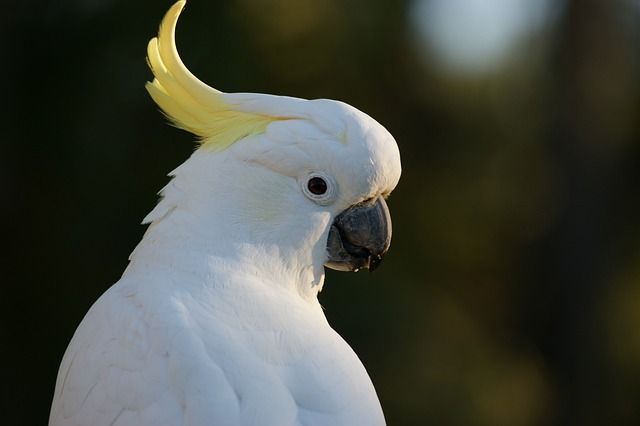 | Sulfur-crested Cockatoo |
 | Royal Flycatcher |
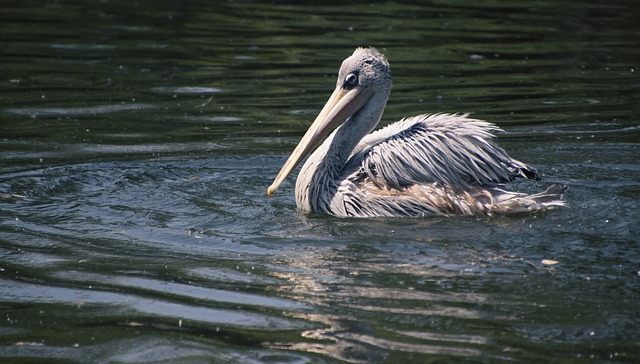 | Dalmatian Pelican |
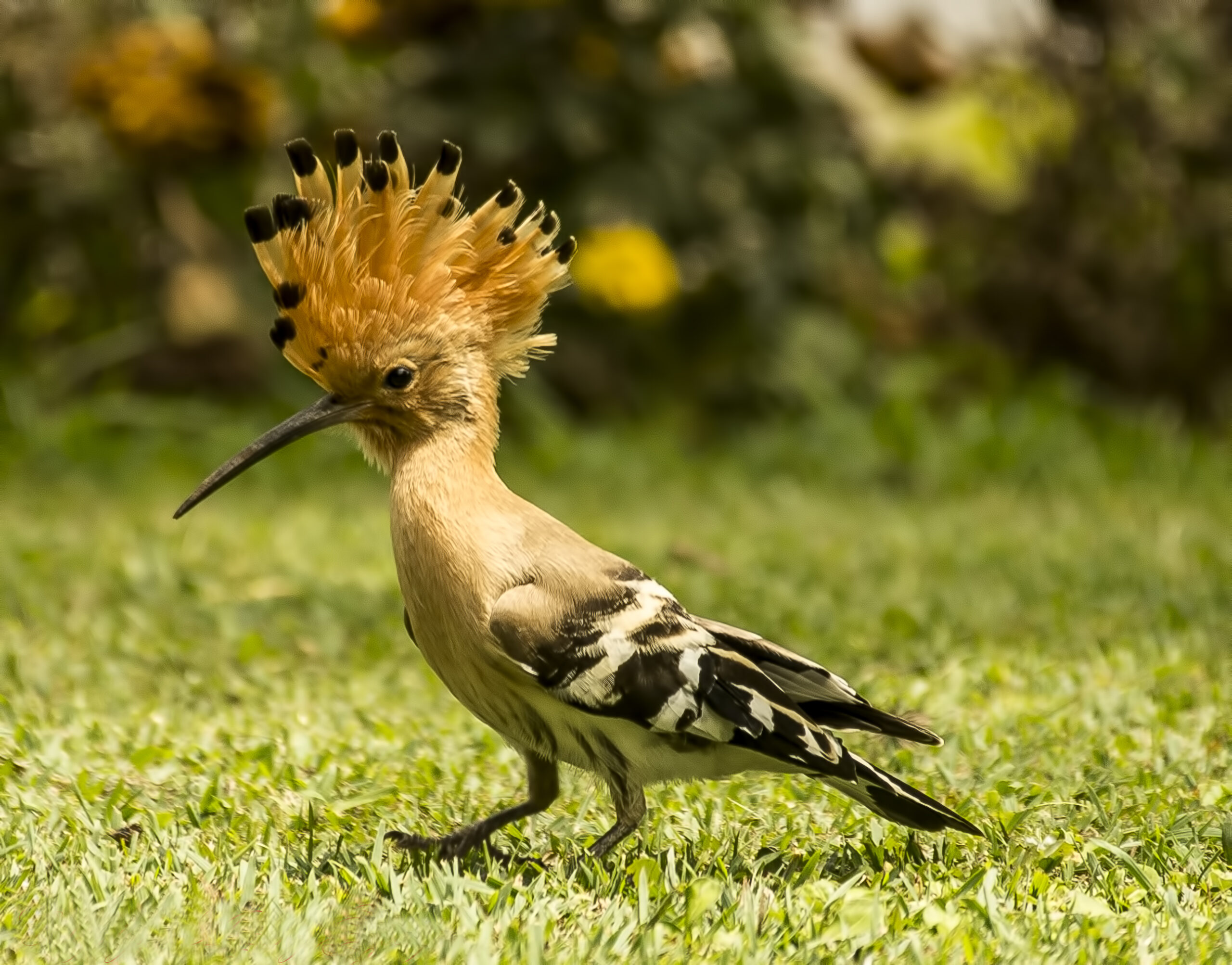 | Common Hoopoe |
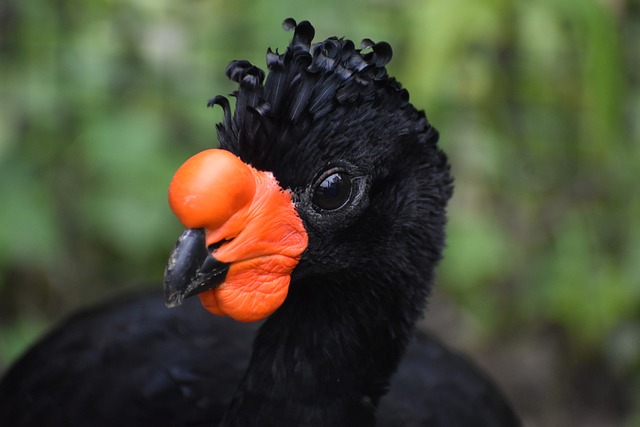 | Curassow |
 | Victoria Crowned Pigeon |
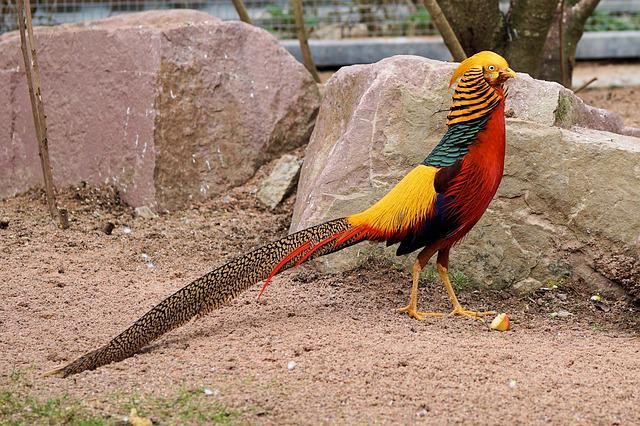 | Golden Pheasant |
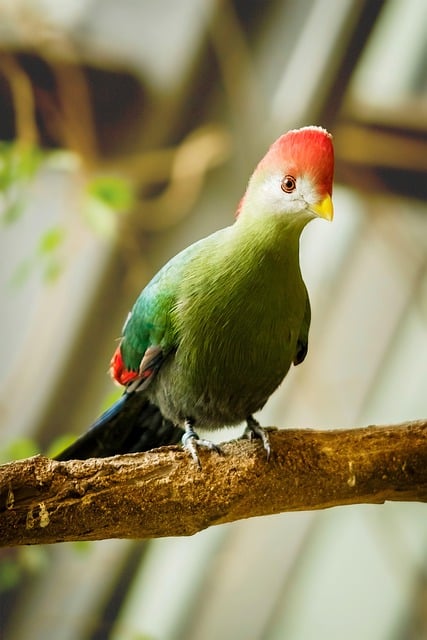 | Red-Crested Turaco |
 | Wood Duck |
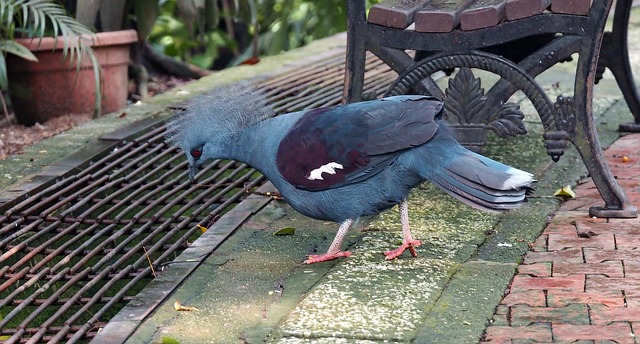 | Western-Crowned Pigeon |
 | Palm Cockatoo |
 | Crested Duck |
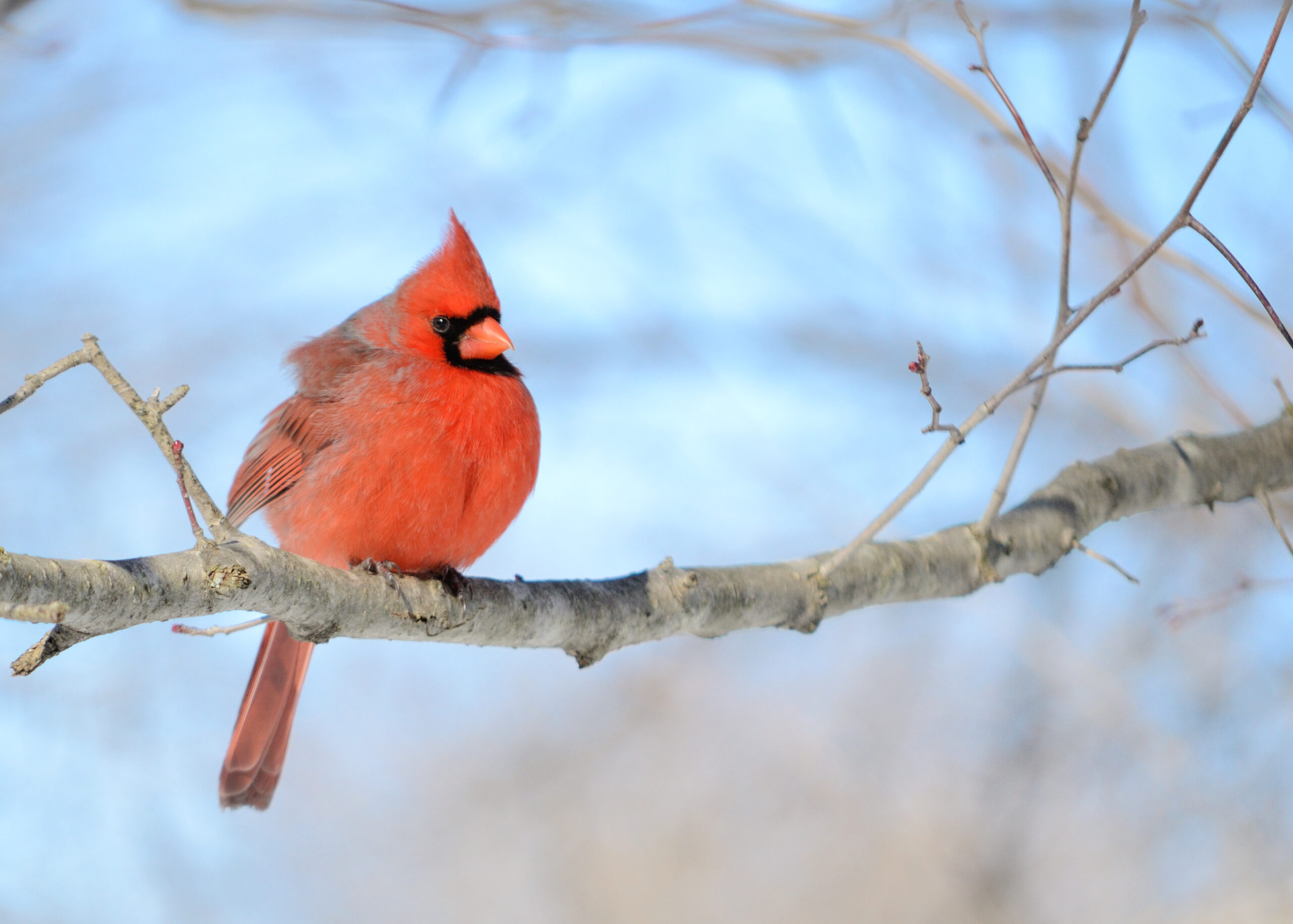 | Northern Cardinal |
Types of Birds with Mohawks
1. Philippine Eagle

The Philippine eagle, or harpacticorax harpacticus, is a species of eagle belonging to the Accipitridae family.
You can only find this species in the old-growth woods of the Philippines’ higher elevations.
As top predators, they feast on a broad range of animals, from small deer and monkeys to reptiles, rodents, bats, and even different birds.
They weigh anything from 8.8 to 17.7 pounds and may be as long as 2.7 feet, making them the largest eagles on Earth.
In spite of their bulk, they are both surprisingly quick and robust, with a possible lifespan of sixty years.
Their heads and upper bodies have a dark brown color, while their legs and bellies are white.
Additionally, these mohawked birds have a big, manelike crest that’s also striped with creamy white and brown feathers.
The Philippine eagle is listed as Critically Endangered by the IUCN because of the destruction of its natural habitat and the resulting deterioration of its survival rate.
2. Tufted Titmouse
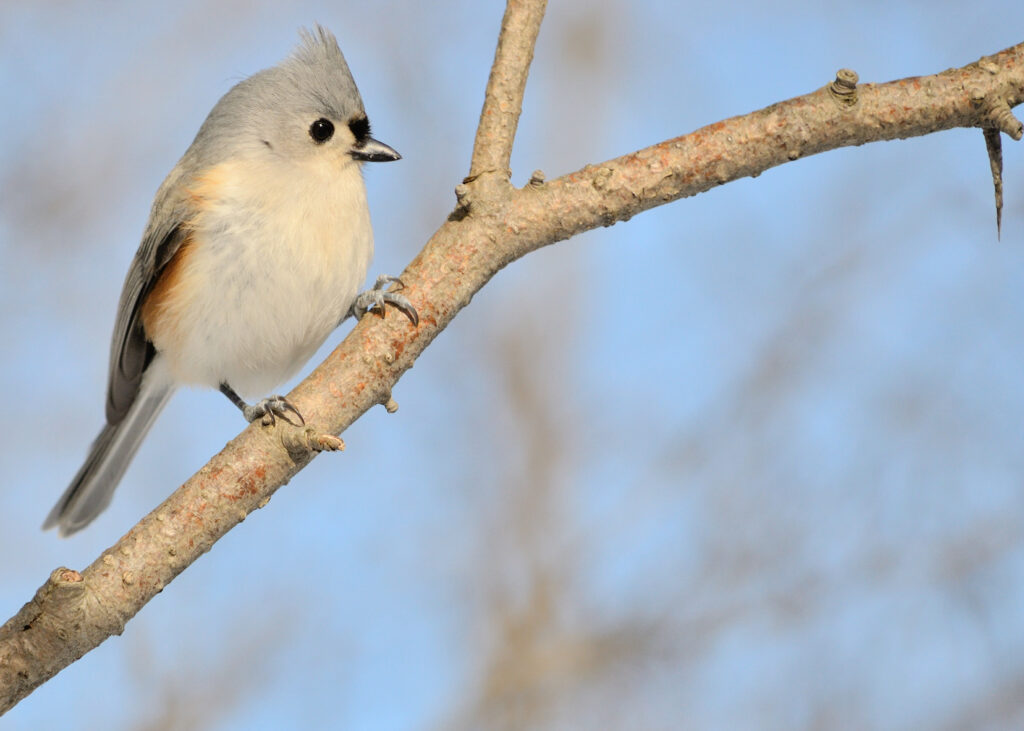
In the family Paridae, which also includes chickadees and tits, the tufted titmouse is among the smaller birds that sport a mohawk.
It doesn’t migrate and has a permanent home range over the eastern United States.
It is most at home in areas with a variety of different types of vegetation, such as parks and gardens, as well as mixed forests.
Tufted titmice consume a wide range of foods, including fruits, nuts, insects (especially caterpillars), seeds, and even other animals like bees and wasps.
Additionally, they usually hide away extra food for the winter.
They can grow up to 7.8 inches in wingspan and 5.6 inches in body length on average.
They have black plumage on their head and grayish body. And they have a little gray mohawk that is reminiscent of a cardinal’s.
In fact, “two-colored tiny crest” is what the tufted titmouse’s Latin word, Baeolophus bicolor, means.
3. Grey Crowned Crane

The grey-crowned crane, Gruidae, is a member of the crane family, also referred to as the golden-crested crane and the African crowned crane.
Huge stretches of dry savannah may be found in both East and South Africa, which is where you’ll find it.
The grey-crowned crane’s diet includes seeds, frogs, snakes, grains, insects, and fish in addition to traditional fare.
They are among the only two species of cranes that nest in trees, a behavior made possible by their disproportionately huge hind toes.
As the mating season approaches, they put on elaborate wooing displays, complete with leaping, dancing, and bowing.
In most cases, they stand at a height of 3.4 feet and weigh 7.8 pounds.
Mohawked birds are distinguished by their enormous, golden crests set against their otherwise white and gray feathers.
Due to pesticide use and declining habitat, the IUCN now classifies the grey crowned crane under the Endangered list.
4. Sulfur-crested Cockatoo

Among the most well-known mohawked birds is the sulfur-crested cockatoo. Large, white species of the cockatoo family (Cacatuidae).
They are found across New Guinea and the neighboring islands, as well as much of northern and eastern Australia.
Wetter lowland environments and metropolitan areas having plenty of trees are ideal for them.
They have a length of 17.6 to 21.6 inches with an almost all-white feather coloration.
One notable difference is the huge, yellow mohawk they spread out while speaking.
Intelligent birds are capable of both musical dancing and problem-solving.
Although they are high maintenance, they are popular pets because of their intelligence and long lifespan.
The International Union for the Conservation of Nature classifies them as a type of “Least Concern,” and some persons even consider them pests due to their ubiquity.
5. Royal Flycatcher

The variety of species and subspecies of the royal flycatcher, which is a member of the family Tityridae, is a topic of continuous discussion.
Those little birds sporting the mohawks may be found all across South America and Central America.
In particular, they like humid environments, such as tropical woods, both at low and high altitudes.
The typical length ranges from 5.8 to 7.2 inches, and the average weight is under One ounce.
Royal flycatchers are insectivores that feed mostly on grasshoppers, cicadas, dragonflies, and even flies.
Their dark feathers are often spotted with yellow or red, based on the subspecies.
However, they have a massive crimson crest that only shows up while mating, courting, or being handled.
Southeastern Brazilians are classified as Vulnerable by the IUCN, despite the fact that certain populations are classified as Least concerned.
6. Dalmatian Pelican

Rarely do mohawked birds like the Dalmatian pelican measure as big or seem as intimidating as they do.
The Dalmatian pelican, which belongs to the Pelecanidae family, seems to be the biggest member of that group and one of the biggest flying birds overall.
They may range in size from 17.0 to 33.2 ounces and 5 to 7 feet in length.
Their habitats include wetland areas in Central Asia, southern Europe, and the middle east regions.
When making the journey to or from their nesting areas, they frequently do so in flocks.
Carp, catfish, and eel are the mainstays of their diet, but they also like the occasional beetle, crab, or worm.
Dalmatian pelicans are distinguished by their mostly white feathers, as well as their big gray and orange beak.
A mohawk-like tuft of white plumage may be seen atop their heads.
The IUCN classifies them as Critically endangered because of factors like habitat degradation and poaching.
7. Common Hoopoe
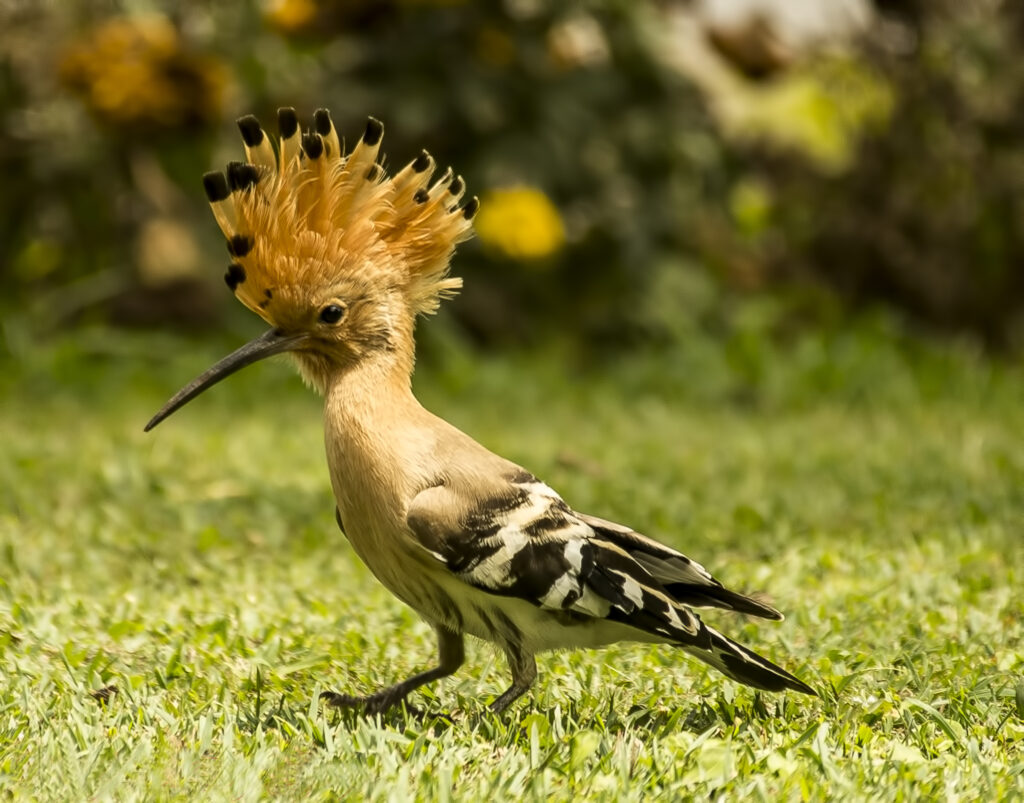
In the family Upupidae, the Eurasian hoopoe represents the most frequent species.
Mohawked bird species may be found around the globe in places like Africa, Europe, and Asia.
Nesting cavities may be found in trees, cliffs, or even man-made structures, and they like to feed on open meadows.
The French word for them, huppée, also means “crested,” but the term originates from their unique “whooping” sound.
However, tiny reptiles and amphibians are also part of the Eurasian hoopoe’s diet.
They have an average length of 9.9 to 12.7 inches and a wing span of 18.3 to 19.5 inches.
Their large wings are black and white patterned, while their bodies and faces are a fawn color.
However, they court and battle while sporting towering, ruddy mohawks with black borders.
Especially males will battle and kill one another with their pointed bills.
IUCN now classifies the Eurasian hoopoe as a Least Concern species.
8. Curassow

Along with turkeys, chickens, and quails, the great curassow is a part of the family of Galliformes, which consists of birds that forage on the ground.
The native range of these pheasant-like birds is from northern Mexico to southern Ecuador and northern Colombia.
As a rule, they prefer the humid conditions of tropical rainforests; however, they may adapt to drier environments if necessary.
The mainstays of their food include figs and other rodents, fruits, and small insects.
Standard length ranges for this fish are 30 to 39 inches, with average weights of 6.8 to 10.6 pounds.
Males have mostly black plumage and a white underside, while females’ plumage is more diverse.
Males have a black, curling crest that makes them among the most dashing instances of mohawked birds.
The great curassow is listed as Vulnerable by the IUCN due to the destruction of its natural habitat and the demand for its meat.
9. Victoria Crowned Pigeon

Most individuals don’t think of pigeons when they imagine birds sporting mohawks, but they would be missing out.
In this regard, consider the Columbidae (dove and pigeon) species known as the Victoria crowned pigeon.
These stunning birds dubbed the “Queen Victoria” after the monarch of England can only be found in the wet woods of New Guinea.
They are social creatures that travel in groups to find food, such as worms, nuts, berries, seeds, and insects.
They range from 30 to 31 inches in length and up to 7.8 pounds in weight.
They have dark blue-gray feathers on their backs and lighter maroon feathers on their chests.
A gorgeous crest of blue plumage, reminiscent of a peacock’s tail, decorates their heads.
The IUCN has classified the Victoria crowned pigeon as a Near endangered due to ongoing habitat degradation and poaching.
10. Golden Pheasant

Another flashy bird with a mohawk is the golden pheasant, often called the rainbow pheasant or the Chinese pheasant.
Though they originated from China, you may find wild populations all throughout Australia and the Americas today.
They have the ability to fly but prefer to graze on the ground for their food of insects, grains, and leaves.
Their typical length ranges from 35 to 41 inches.
They have yellow feathers on their lower back and rear, red feathers on their breast, green feathers on their upper back, and tan feathers on their chin, face, and neck.
They wear a spreadable “cape” with black and orange bands in addition to their vivid orange mohawk.
Chrysolophus pictus, the name given to it by scientists, means “decorated with a golden crest” in both Ancient Latin and Greek.
The International Union for Conservation of Nature classifies it as a “Least Concern” species because of its high population.
11. Red-Crested Turaco

It lacks the crest of a northern cardinal, which would be brushed upwards from its red head plumes, yet it is still beautiful.
Its large, thin beak is yellow, and its green wings include red bands.
In Angola, the red-crested turaco is a frequent sight in the country’s forests, meadows, and savannahs.
Considering that a pileated woodpecker may be anywhere from 15.9 to 19.4 inches in length, this bird is almost the same size.
These birds are monogamous, and both sexes will work on a nest together at a height of up to 60 feet in the canopy of a forest.
12. Wood Duck

You’ll want to pull out your camera to capture the male’s pristine feathers.
A black face, crimson eye, and a yellow patch atop its white, pink, and black bill stand out against its green mohawk, which seems to have been combed back.
When compared to a male, a female’s crest is smaller and more delicate looking, and it is the same light gray color as an eastern bluebird’s head.
In addition to its blue splotches and brown plumage, this bird also possesses brown feathers on its wings.
Native populations may be found in the eastern and northwestern states; however, they can be found all over the continent.
Northern regions are home to breeding populations, whereas the southern United States is frequented by nonbreeding wood ducks.
It lives in woodland bogs, so look out for it if you happen across one.
Most wood ducks measure 18.4 and 21.4 inches from the bill to the tail.
13. Western-Crowned Pigeon

Because of human persecution and the destruction of its natural environment, this bird is in peril.
A rare sight indeed, but the grey plumage on its head is very breathtaking.
This pigeon, like its regal counterpart, the Victoria crowned pigeon, is native to New Guinea.
14. Palm Cockatoo

This magnificent parrot has a smokey black mohawk and a cheek band of bright red color.
The drumming of its bill, which is thick and tapered at the end, is rhythmic and steady.
With a maximum length of 19.8 to 25.7 inches, the palm cockatoo is among the longest of the cockatoo species.
Australia, Papua New Guinea, and Indonesia are just some of the places you may find this bird.
15. Crested Duck

The Crested Duck’s mohawk has a glossy, slick appearance as if it were gelled.
This duck’s life expectancy has been lowered due to a cranial malformation brought on by the crest, which is the result of a genetic abnormality.
Because of the distinctive appearance of its head plumage, this duck was initially discovered in the East Indies and then transported back to Europe.
Crested Ducks are capable of reproducing, but the crest is a recessive trait; thus, not all offspring will inherit it.
16. Northern Cardinal

Female and male Northern Cardinals have little afros.
It’s amazing to see a male Northern Cardinal in the winter, particularly against the stark whiteness of the snow.
The females may be a touch flashy as well, thanks to their brown crown, brown plumage, red accents, and red beaks.
During the mating season, Northern Cardinals may be so obsessed with protecting their territory that they can even fight their own reflection.
Conclusion
In conclusion, these 16 types of birds with mohawks prove that the avian world is full of surprises and unique features.
From the striking crests of the Palm Cockatoo to the spiky punk rock style of the Common Hoopoe, these birds are a testament to the diversity and beauty of nature.
Whether you’re a birdwatching enthusiast or simply appreciate the wonders of the natural world, these feathered rebels are sure to capture your attention and leave you in awe.
So next time you’re out in the wild, keep an eye out for these amazing birds with mohawks and remember to embrace your own individuality, just like they do.
FAQ
What is a mohawk on a bird?
A mohawk on a bird is a distinctive tuft or crest of feathers on the top of its head that stands upright, creating a striking and sometimes punk rock-like appearance.
Why do birds have mohawks?
The mohawk on birds is believed to serve several purposes, including attracting a mate, warding off predators, and communicating with other birds in their species.
Which bird has the tallest mohawk?
The crested guineafowl is known for having the tallest mohawk of any bird, with its feathers standing up to 6 inches high.
Which bird has the most colorful mohawk?
The golden pheasant is renowned for its stunningly colorful mohawk, which includes a mix of bright red, orange, and yellow feathers.
Are mohawks on birds rare?
While not all bird species have mohawks, they are not particularly rare either. Many types of birds have crests or tufts of feathers on their heads that can be classified as mohawks.
Do all birds with mohawks have them year-round?
No, some bird species only display their mohawks during certain times of the year, such as during breeding season or when communicating with other birds. Other birds may have their mohawks year-round.
Can mohawks on birds change color?
Yes, in some bird species, the color of the mohawk can change depending on the bird’s mood or behavior. For example, a bird may display a brighter or more vibrant mohawk during mating season to attract a mate.
Last Updated on March 22, 2023 by Lily Aldrin
